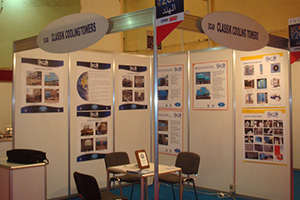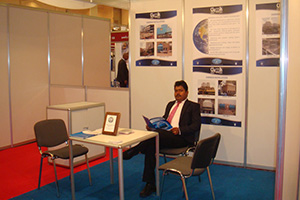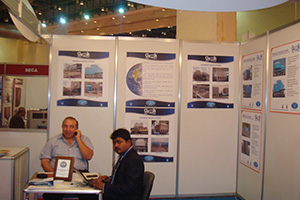Cooling Tower Maintenance
Cooling towers play an important part in many industrial processes. Therefore Cooling towers that no longer reach their cooling capacity have an important impact on your production process. A decrease in cooling capacity often has the same cause: a polluted Cooling towers.
Cooling towers regulate temperature by dissipating heat from recirculating water used to cool chillers, air-conditioning equipment, or other process equipment. Heat is rejected from the tower primarily through evaporation. Therefore, by design, Cooling towers consume significant amounts of water.
Cooling towers are heat exchangers that use water and air to transfer heat from air-conditioning systems to the outdoor environment. Most commonly, they are used to remove heat from the condenser water leaving a chiller. Cooling towers are usually located on rooftops or other outdoor sites. Because they are frequently out of sight, they are often neglected by operation-and-maintenance technicians, resulting in lower cooling-system efficiency. This document will help you adopt best practices for the efficient operation and maintenance of Cooling towers.
Cooling towers use evaporation to release waste heat from an HVAC system. In an open tower, hot water from the condenser is slowed down and spread out over the fill. Some of the hot water is evaporated in the fill area, or over the closed-circuit tubes, which cools the water. Cooling towers fill is typically arranged in packs of thin corrugated plastic sheets or as splash bars supported in a grid pattern.
Hot water from the chilled-water system is delivered to the top of the Cooling towers by the condenser pump through distribution piping. In an open tower, the hot water is sprayed through nozzles onto the heat transfer medium (fill) inside the Cooling towers. Some towers feed the nozzles through pressurized piping; others use a water-distribution basin and feed the nozzles by gravity. In a closed-loop tower, the water from the condenser loop runs through tubes in the tower and is not exposed to the outside air. Water for cooling the tubes circulates only in the tower.
Cooling towers water must be regularly treated, generally with chemicals, to prevent the growth of harmful bacteria, minimize corrosion, and inhibit the buildup of scale (mineral deposits) on the fill.
Inside an operating Cooling towers is much like a hurricane. This harsh environment must be regularly inspected and maintained for best system performance.
Cooling Tower
Quality













